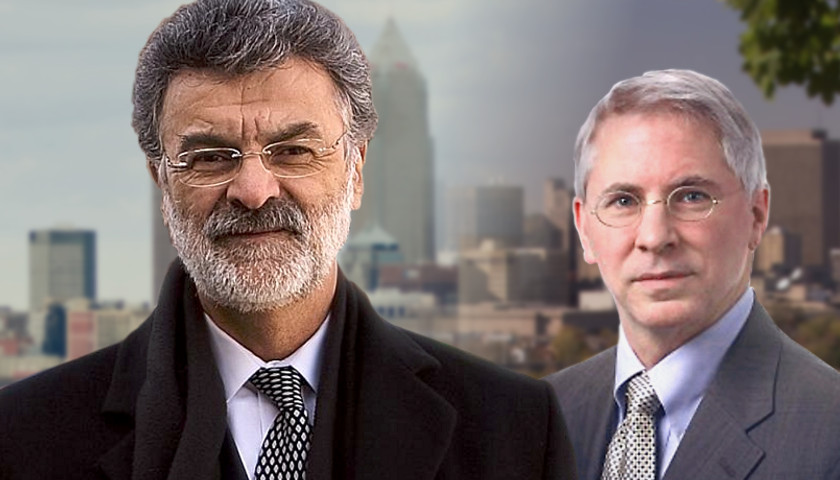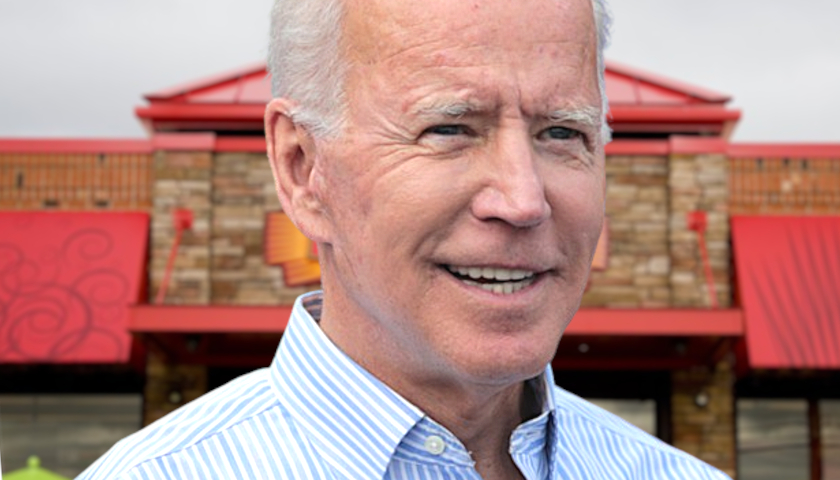The Partnership for a New American Economy (PNAE), is a powerful and well-funded big-business-cheap-labor lobby led by business leaders, former politicians, and chambers of commerce. Renamed to the shortened New American Economy (NAE), the coalition continues its advocacy for comprehensive immigration reform by highlighting the work ethic and perceived business ambitions of legal and illegal immigrants over native-born Americans.
Cleveland Mayor Frank Jackson and former Dayton Mayor Gary Leitzell are named members of the NAE.
Included in NAE’s “15 key economic issues of immigration reform in America” which promote legal and illegal immigration are:
- Supporting legal status for the 11.4 million undocumented immigrants which PNAE says pay taxes and do the jobs American citizens won’t do, and despite being in the country illegally, “even start their own businesses.” In a 2014 Wall Street Journal oped, NAE co-founder Rupert Murdoch said that illegal immigrants who are already here should be provided a path to citizenship.
- Supporting resettlement of refugees who NAE says that after living in the U.S. between 16-25 years are earning well above the income of refugees who have been here for five years or less. Moreover, NAE believes refugees are the answer to reviving aging and declining communities.
- Pushing state and local policymakers to support in-state college tuition for illegal immigrant students.
Founded in 2010, the NAE formed to convince the public and policymakers that comprehensive immigration reform like the 2013 “Gang of Eight” amnesty bill which offered a path to citizenship for illegal aliens in the U.S., would also help grow the economy and create jobs for Americans. The amnesty bill also made it easier for cities to refuse cooperation with ICE and continue sanctuary city policies.
After Congress failed to pass the “Gang of Eight” bill, NAE turned its focus to influencing the politics of immigration at the state and local level collaborating with Welcoming America to use initiatives like “Gateways for Growth” (G4G) grants designed to “integrate immigrants as part of an economic growth strategy.”
Launched in 2009, with support from George Soros’ Open Society Foundation’s Four Freedoms Fund, Welcoming America provides technical assistance to G4G recipient cities.
Akron and Columbus were among the first 20 cities to be awarded a G4G grant. These cities have adopted the trademark Welcoming America “welcoming resolutions” and strategic plans to make cities more inclusive and welcoming to immigrants.
Even though Dayton has not received a G4G grant to date, the city, along with Cincinnati have adopted strategic plans which prioritize the needs of immigrants because of their perceived economic value. Summit County has also adopted a “welcoming resolution” which is often the first step to more formalized plans focused on the immigrant workforce.
With the help of Welcoming America, the “Dayton Welcome Plan was announced with 20 new recommendations to welcome and integrate immigrants across key areas: encouraging business and economic development; ensuring access to education, health, and government and justice services; and promoting an appreciation of diverse arts and cultures.”
Cincinnati and the Great Lakes Metro Chambers of Commerce (GLMCC) are part of NAE’s “Global Talent Chamber Network.” In fact, GLMCC is a founding member of this group and has “named New American Economy as its formal partner on immigration issues.”
GLMCC and Cincinnati have pledged to work with NAE and convince the public, city, state and federal leaders that the only way to economic prosperity for the Great Lakes Region is through increased immigration.
Importantly, like all organizations that seek to advance legal and illegal immigration, NAE’s data gathering, analysis and reporting does not necessarily distinguish illegal from legal immigrants:
Except where otherwise noted (e.g., “undocumented immigrant” or “DACA-eligible”), we define an immigrant as anyone born outside the country to non-U.S. citizen parents who is living here and counted by the census. So, this includes naturalized citizens, green card holders, temporary visa holders, refugees, asylum, and undocumented immigrants, among others.
Welcoming America has also targeted Ohio with its own 10-state region “Welcoming Economies Global Network (WE Global),” yet another initiative focused on developing and empowering immigrant economic development.
NAE’s part in promoting the WE Global has involved networking Chamber of Commerce leadership who commit to globalization and developing the immigrant workforce as priorities, including refugees.
U.S. State Department data on the arrival of refugees available since 2002, shows that Ohio has received 33,460 refugees, which includes large numbers of Bhutanese, Somalis, Iraqis, Burmese and Syrians. The numbers do not, however, account for secondary migrants who are first resettled in other states but then relocate to follow friends, relatives or jobs.
The years with the highest number of arrivals to Ohio were during the Obama administration.
As of July 31, 2018, the U.S. has admitted a total of 18,214 refugees. Ohio is the second highest refugee receiving state to date so far this fiscal year, with a total of 1,218 refugees resettled in the state in the ten months from October 1, 2017 to July 31, 2018.
Texas, with 1,336 refugees resettled during that same time period, is the only state that has resettled more refugees than Ohio.
California, which has a population almost three times as great as Ohio, has resettled 100 fewer refugees than Ohio so far in FY 2018.
You can see the breakdown of refugees resettled in Ohio during FY 2018 by country of origin and by city of initial resettlement here in this report provided by the Department of State, and available for everyone at the department’s wrapsnet.org website:
[pdf-embedder url=”https://theohiostar.com/wp-content/uploads/2018/08/1218-Refugees-Resettled-in-Ohio-so-far-in-FY-2018-Oct-1-2017-to-July-31-2018.pdf” title=”1218 Refugees Resettled in Ohio so far in FY 2018 Oct 1 2017 to July 31 2018″]
U.S. State Department data from 2006 forward shows that of total U.S. Bhutanese arrivals 47,785 have been in the 21 to 50 year old working age group and they overwhelmingly have no English language skills, with mostly primary and secondary school education. The number of Bhutanese refugees in the same time period aged 65 and older who most often receive Social Security benefits, is reported at 4,684.
Since 2006, close to 10,000 Bhutanese have been resettled in Ohio.
In 2015, the Columbus Dispatch reported results of a study about the high rates of suicide among Bhutanese refugees. The study was initiated at the request of a federal contractor resettlement agency bringing Bhutanese refugees to Ohio. Overall, suicide among Bhutanese refugees outstrips the rate among the general U.S. population and is higher “than the global suicide rate of 16.9 percent.”:
Bhutanese refugees in central Ohio are twice as likely to report thinking about suicide as are those elsewhere in the U.S. They have high rates of anxiety, depression and post-traumatic stress and report that they smoke and use alcohol more frequently than other Bhutanese refugees….Some Bhutanese suffer from depression, post-traumatic stress disorder and other mental-health problems even before they arrive in the U.S., Adhikari said. Others have difficulty learning English, finding employment and providing for their families.
Somali refugees are the next highest group of refugees resettled in Ohio, with 7,982 arrivals reported in the state since 2006. Demographic data for total U.S. Somalis arrivals since 2006, put 40 percent, or approximately 30,248, of arrivals in the 21 to 50 year old group. An almost equal number, or 26,691 Somali arrivals, were reported as under 14 years of age and 1,177 were reported to be aged 65 or older.
Of the 77,860 Somalis that arrived nationwide, 13,248 were reported to have no education.
NAE’s Ohio’s August 2016, state specific report admits that the foreign-born are “more likely to be working-age.” The report also discloses that:
Immigrants in Ohio gravitate at the lower end of the skills spectrum as well. They are 66.1 percent more likely to have less than a high school education than natives. What’s more, the foreign-born population is also more likely to be working age, which we define in this brief as ranging in age from 25 to 64. In Ohio, 67.8 percent of the foreign-born population falls into that age band, while only 51.6 percent of the native-born population does.
According to NAE’s reporting methodology, these numbers include their estimate of 97,916 illegal aliens living in Ohio, 76 of the percent of whom were in the working age 25 years old to 64 years old group.
Harvard professor of economics and social policy, George Borjas explains that the wages of “low-skilled American workers, including many blacks and Hispanics” are most negatively impacted by the inflow of immigrants, “a disproportionate percentage [of whom] have few skills,” and that “[a]ccording to census data, immigrants admitted in the past two decades lacking a high school diploma have increased the size of the low-skilled workforce by roughly 25 percent.”
NAE and Welcoming America’s prioritization of the legal and illegal immigrant workforce does not acknowledge employment competition posed by low-skill immigrants.
Ohio is starting to see positive effects from the Trump administration’s actions on trade and tax cuts. JSW Steel announced that it will be investing $500 million dollars in a closed Ohio steel mill as opposed to opening a new plant in India and projects that it willl create 300 permanent jobs in Jefferson County.
Manufacturers in Ohio report paying employee bonuses, reinvesting in their companies and expanding in ways that will create more jobs – all as a result of the Republican-passed tax cuts:
We appreciate how President Trump is placing National Association of Manufacturers’ members and manufacturing front and center. Pro-growth, pro-worker policies that help manufacturers expand and compete are vital for the 687,000 manufacturing workers in Ohio. These are high-paying jobs—the average Ohio manufacturer earns $72,534—and manufacturers in the state generated $108.09 billion in 2015.






[…] Ohio Star has previously reported on the very high number of Bhutanese and Somali refugees living in […]
[…] The Ohio Star reported earlier this week, Ohio has one of the largest populations of Bhutanese in the United […]